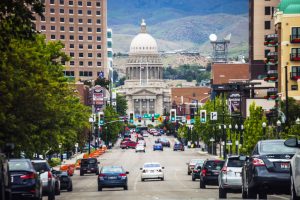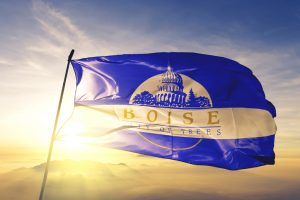 By Casey Jones, CAPP
By Casey Jones, CAPP
Last November, Lauren McLean succeeded four-term incumbent Dave Bieter to become Boise’s 56th mayor. To establish her agenda and set priorities for the new administration, the new mayor invited more than 70 citizens to participate in one of six transition committees tasked with forming recommendations to address social equity, economic opportunity, community engagement, housing, sustainability, and transportation. I had the great fortune of joining 15 fellow citizens who, together, produced a report, “Movement for Everyone.”
Our group was diverse and included members of the business community, accessibility advocates, public transportation service providers, Boise State University, transportation consultants, and traffic engineers. The report and accompanying recommendations were equally diverse and were based on the following assumptions:
- Congestion cannot be mitigated without substantial community behavioral changes and decreased vehicle miles traveled in the city.
- Pedestrian, bicycle, and vehicle injuries and fatalities are preventable.
- Priority should be given to building on existing infrastructure, services, and programs.
- Boise is a part of a larger, critical region that is growing together.
- The City of Boise must be an effective and collaborative partner with both public and private entities.
Recommendations were divided into temporal categories– first 100 days, first year, first term–and included a mix of policy, funding, and tactical steps the city should take to improve transportation for its citizens and adjacent communities. Some of the most exciting and promising recommendations are:
- Bolster the recently formed downtown Boise transportation management association (City Go) to maximize its visibility, increase its use, and decrease congestion in core areas of the city.
- Ensure the City of Boise is the commute trip reduction model employer by maximizing incentives for alternative transportation for its employees.
- Increase management efforts in Boise and explore additional innovations aimed at maximizing access for short-term parking users. Leverage digital advancement and invest in solutions to support transportation network corporations (i.e. Uber, Lyft), freight, and transit.
- Partner with Boise State University to advance practical research aimed at quantifying, understanding, and developing potential solutions for the city’s transportation needs.
Participating on the committee made me more hopeful than ever about the future of our community’s transportation efforts, most especially when we work together to address the pressing issue we face. You can read the full report here.
Casey Jones, CAPP, is senior parking and mobility planner with DESMAN.

 By Casey Jones, CAPP
By Casey Jones, CAPP